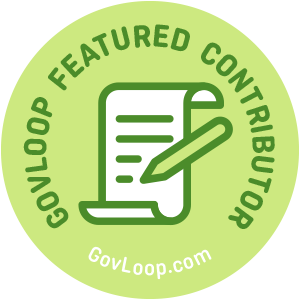Not these words, please! Let me start with what is consistently proven to be untrue: that to create change in an organization, leaders must “get buy-in” and “overcome resistance” in order to “drive adoption.” These have become mechanistic catch phrases and oh-so-20th-century. Also, they don’t really work. And, if your goal is to create “change that sticks!” you are living an organizational myth. No wonder so many government leaders want to head for the hills if you even use the term “change management.”

Why not “get buy in?” If you are seeking buy-in, you’ve defaulted into the role of “seller” — and, as you tout all the benefits of the change you want to implement like it’s the greatest thing since hotcakes, it’ll get harder and harder to hear what people’s reservations or concerns might be. This is not a position of strength for a change leader, it doesn’t enhance your credibility, it risks more — not less — resistance, and it doesn’t help your organization build change capability.
What to do? Bring the question — not the answer! Get partners — not “buy-in.” Invite executives, mid-level, and front-line team members to jointly frame the need, the goal, and path to change with you. If you create a coalition-of-the-willing to partner with you from the start and develop a process you can iterate so that others across your organization can co-design the solution with you, you won’t need to sell anything. Not even hotcakes.
Why not “overcome resistance”? Because it doesn’t work. You can’t “push through” or ignore it or “side-line” it. Resistance is human. There is no formula to make it go away, and the harder you try to overcome resistance the more it will ooze out in the most unexpected and risk-fraught ways. Trying to sell the change doesn’t on its own overcome resistance either. Telling me how wonderful this change is going to be doesn’t necessarily result in me liking the change or how it came about. That is the reality on the ground.
What to do? Use resistance as “data.” What are resistors telling you? Sure, there may be lots of “yes, buts,” but what’s behind the push-back? What are their ideas? Their worries? Failing to (pause and) listen means you won’t get the advantage of key inputs that will bear significantly on the success of the change effort and how to communicate it effectively. Plus, you’ll lose the chance to build trust and credibility that come with the simple act of listening. Your team members have valid questions and valuable perspectives — that’s why you hired them. Not engaging in listening sessions and dialogue as part of your change process means you aren’t optimizing the very human assets that make your organization hum with day-to-day insight and productivity.
Why not “drive adoption?” “Driving adoption” is a popular term, but it isn’t something that naturally resonates with the human process of change. “Driving adoption” is a kissing cousin to seeking compliance (back to “buy-in”). People who are “driven to adopt” may certainly feel compelled to change, but more is needed to transform a business process — or an organization.
What to do? Look for after-effects. In the case of digital transformations, developers and site prep folks, trainers and the deployment and service desk teams all (should) know that eyes-on-the-prize means user adoption. With that, however, we also know that these initiatives cause change impacts that can ripple across the organizational landscape frequently in unanticipated ways. And so, as users adopt the change, the door invariably opens to changing job descriptions, new performance priorities or criteria, revising functional alignments and strategic plans, re-designing customer interfaces, and — yes — changing the culture. User adoption may be just the beginning — users can sense this, and change leaders need to be prepared.
Do you really want “change that sticks?” Integrating what’s new into “how we do things around here” is good until it is time to change “how we do things around here.”
What to do? Bring the question! Effective change leaders ask their teams “what needs to change?” as part of normal, day-to-day conversation and dare to ask “how is our environment changing, and are we prepared to change? Where are we leading? Where should we be leading?” The ability to molt as an organization, to take in and use new information, to see the landscape around you shifting and therefore seeing that it is necessary to shift too — these are essential capabilities made all the harder if what we say we want is “change that sticks.” Balancing the paradox of “sticky change” with expanding an organization’s ability to innovate is one of a change leader’s biggest challenges.
Those catch phrases are catchy, but they mask the real deal: Your team can detect the hollowness of a catch phrase a mile away! So must you. Change is complex. It is personal. It is hard work. Don’t over-simplify or sugar-coat. Your teams will thank you for it.
Nina is a change management practitioner with Rockwood Company, a woman-owned Washington-based strategy and change management consulting firm serving government leaders and their teams as they work to address our nation’s most complex and meaningful challenges. In her client work, Nina has supported a wide variety of organizational change efforts — from digital transformations and functional re-alignments to the stand-up of enterprise risk management programs, organization-wide policy-change initiatives and more. She has an MA in Communications andan MS in Organization Development and graduated from both the Johns Hopkins Fellows in Change Management Program and Georgetown University’s McDonough School’s Change Management Advanced Practitioner Program (CMAP). She is ProSci trained, and has written about organizational change for govloop.com, Change Management Review, and Government Executive.




Leave a Reply
You must be logged in to post a comment.